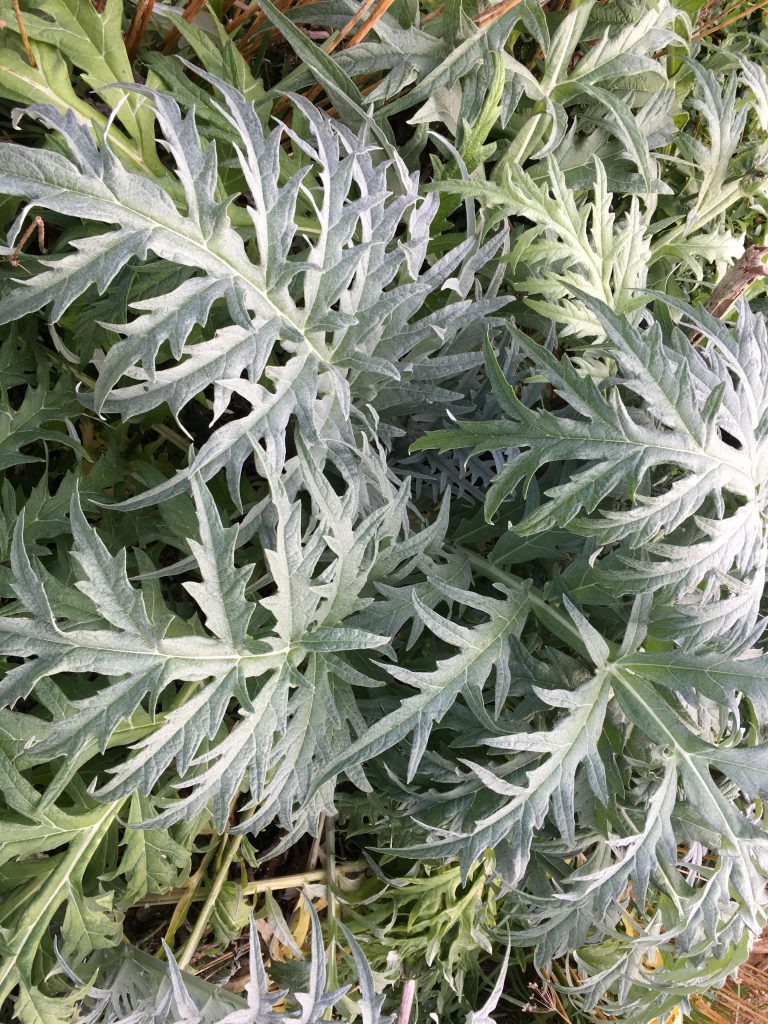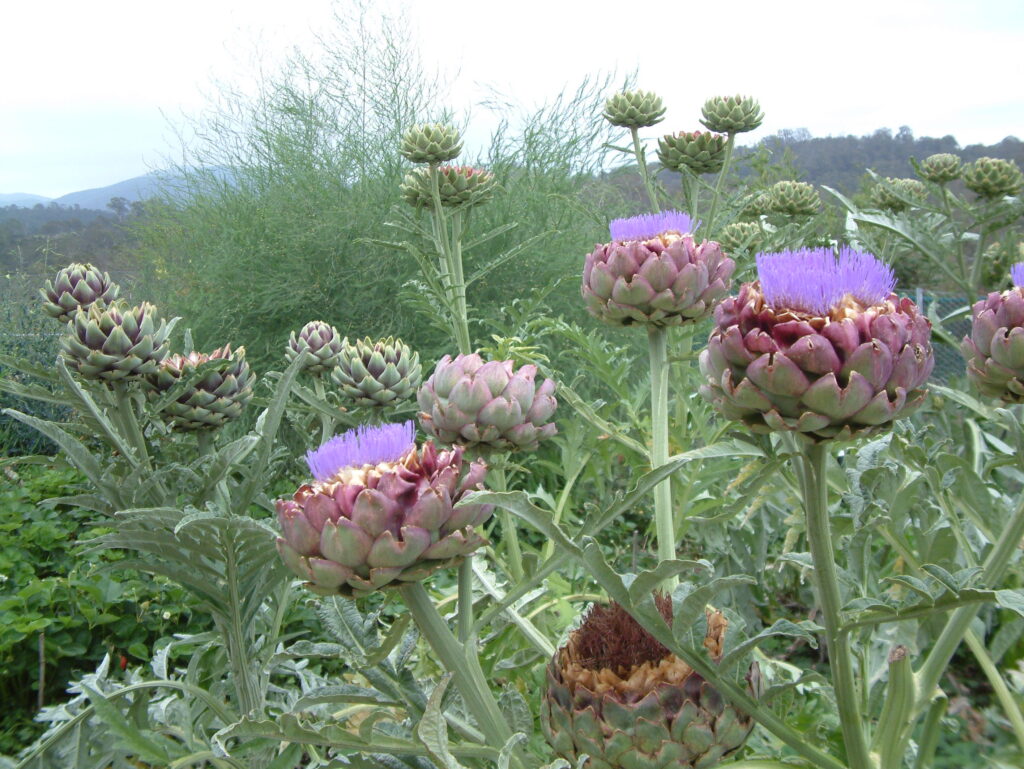Botanical name : Cynara cardunculus
Synonyms : Cynara scolymus
Common name : Globe artichoke, cardoon, artichoke
Challenging for seed saving
Lifecycle: Perennial
Pollination: Insect pollinated
Mating system: Perfect, self-fertile flowers
Suggested spacing: Same as for eating production
Seed specific requirements: Vernalisation
Isolation distance: 250 m
Population size: 20 plants
Seed maturity: when the flower bracts turn brown
Processing method: Dry processing
Expected seed viability: 5 years
Images


Growing for seed
When growing for seed the flower heads of globe artichoke cannot be harvested for eating, neither can the stalks of cardoons. The flowers are left to open, pollinate and mature the seeds. This process takes several months.
Globe artichokes and cardoons do require a cold period, under 10 C, to initiate flowering. Vernalisation is achieved in just a few weeks of cold weather for globe artichokes, cardoons may require longer.
Plants do get quite large and planting them with at least 90cm between plants would not be unusual. They may not flower in the first season as they can be slow to reach sexual maturity.
Artichokes are often propagated vegetatively rather than from seed. Mature plants will form pups which can be dug up and replanted at larger spacings so that they develop into full sized plants without competition.
Selection
Globe artichokes have different shaped and coloured flowerheads. Plants should be selected that conform to the variety being grown for seed.
Harvest
Seed takes a long time to mature once the flower has been pollinated. After approximately 2 months the flower bracts will be brown and the head is ready for harvesting. Avoid leaving the mature dried heads in the garden during wet weather.
Processing
Processing globe artichoke heads to release the seed can be challenging. The heads contain sharp points and should be handled carefully. The fine hairs in the thistle head are also dusty and stick to clothing. Putting heads into a heavy duty bag and walking on them or beating them with a mallet can help break them up to release the seeds. If processing a small quantity then using a fork to separate the seed can be effective.
Contributors
Liz Worth, Nellie Pryke
